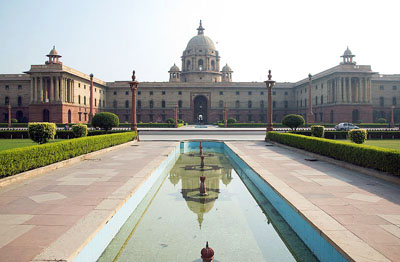Several other features drew favorable comments, including an ambitious target for disinvestment; a special allocation for raising agriculture yields in eastern states and for pulses; and the resolve to cut petroleum subsidies by allocating just Rs3,100 crore for the full year, portending another price rise in the near future. Raising the limits for personal income tax and broadening the slabs drew a mixed response. There was a feeling that the Laffer curve potential may have been exhausted and there could be a decline in revenue from lowering the tax rates. Raising the minimum alternate tax (MAT) is seen as anomalous in light of keeping exemptions in place. It reduces the incentive contained in the exemption, and thus makes the exemption redundant. So why keep it?
As a participant in the Budget seminar, I voiced my disappointment that the Budget can be seen as a lost opportunity for pushing forward an agenda of much-needed structural reforms. In his presentation, the Finance Minister was categorical that the it is not merely a statement of government accounts, and should contain a vision. But he fell short of his own benchmark. There are practically no measures with far-reaching or game-changing qualities in the Budget, unless one accepts the move on reducing petroleum subsidies and changing the basis for fertilizer subsidies as some. Given the absence of any political constraints, external to the governing party, the Budget could have included measures to attract bigger volumes of private investment to make up for the inevitable tapering off of the fiscal expansion. Sadly, this is missing.
Today there is practically a void in terms of strategic planning and long-term policy thinking within the Indian government ministries. The Prime Minister’s Office has also consciously given up this role; the best bet is that it is housed in the Cabinet Secretary’s Office. But undertaking reforms requires bold forward thinking and that is the realm of the political process, with the bureaucracy ensuring its implementation. Perhaps the Planning Commission will perform that role, when it emerges in its proposed avatar of the government’s chief economic policy think tank. For now, it must be played by the Finance Ministry which, because of its official mandate, is privy to and involved in all major decisions in any part of the government.
Moreover, the Finance Ministry’s function as guardian of the country’s financial and economic health is affected by what other ministries or departments do. Therefore, the budget could become the occasion for marshaling reform proposals from all the line ministries, examining their financial and economic implications, and then including at least an outline of the proposed reform in the budget. This ensures that line ministries have a target and timeline to achieve, and the proposals go through the necessary parliamentary review. This was done during the early 1990s, and there is no reason for not adopting this modality, quite suited to Indian political and governance realities.
The current budget seems to have given up on the move towards an outcome- or performance-based model, as initiated by the previous United Progressive Alliance government. Surely that is the way to achieve higher expenditure efficiency. This Budget also seems to have regressed rather than moved towards a relatively more unified structure of taxation to pave the way for a goods and services tax.
The capital market response has been a little surprising, due, it seems, to the Budget moving along expected lines. Conversely, the rising yields on government securities show that bond markets have not accepted at face value the Indian government’s commitment to bring down the level of borrowing. This will result in losses for banks and other financial players and also exert upward pressure on interest rates. This may dampen the investment demand at a time when firms are looking to expand capacity and build inventories.
Hopefully, the animal spirits of Indian entrepreneurs, buoyed by rising demand from higher disposable incomes thanks to the income-tax concessions, will be strong enough to take the coming interest rate hike in their stride. It would be a pity if higher capital cost and governance glitches nipped the investment boom in the bud. That is the only way to achieve the required growth rate.
This essay is adapted from an opinion piece first published here in the Mint.
Rajiv Kumar is director and chief executive of the Indian Council for Research on International Economic Relations.

